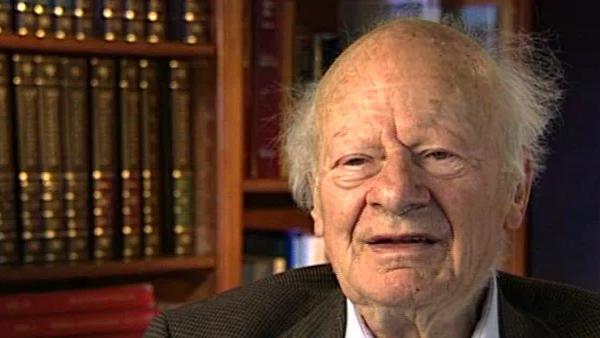NEXT STORY

Supernovas and the origin of the elements
RELATED STORIES

NEXT STORY

Supernovas and the origin of the elements
RELATED STORIES


|
Views | Duration | |
|---|---|---|---|
| 131. Stages in the stellar evolution theory | 1 | 288 | 03:34 |
| 132. Gerald Brown suggests solving the problem of supernova | 314 | 02:02 | |
| 133. Figuring how a supernova happens | 283 | 03:18 | |
| 134. James Wilson’s theory of supernovae | 299 | 03:02 | |
| 135. More on supernovae, the gain point | 249 | 03:05 | |
| 136. Supernova shocks | 260 | 03:44 | |
| 137. Accelerating shocks in supernovae | 245 | 02:58 | |
| 138. The 1987 supernova | 271 | 03:00 | |
| 139. Supernovas and the origin of the elements | 262 | 03:31 | |
| 140. Gerry Brown speculates on the formation of binary neutron stars | 256 | 02:35 |


That supernova could be observed in all details, and it is still being followed. It now emits mainly infrared radiation. It could be followed in all details, close enough in fact that you could determine how much energy is given to the ejected material and that energy is a few times 1051 erg or, well, between one and two times, and only a small fraction of that, only about 1% of that comes out as light. The main part of that comes out simply as kinetic energy, so you have to observe the Doppler Effect and observe... thereby determine the velocity of the outgoing material, and from that it was possible to determine the energy release. I had some input into that, but the main analysis of that was done by one American and one Japanese astrophysicist, Woosley at University of California, and Nomoto in Tokyo University. They competed, one publishing a paper, then the other publishing a different paper and it is still going on at the present time, and they were able to analyze not only how much energy was released, but also how much nickel-56 was produced. They found out that about 7% of a solar mass of nickel-56 is produced, and that's very interesting because the nickel-56 of course, gives characteristic radiation; it contributes to the optical radiation which was visible; it contributes also gamma rays when the nickel-56 captures electrons and turns into iron-56. And... so it made us... made it possible to understand what really happens in the supernova.
The late German-American physicist Hans Bethe once described himself as the H-bomb's midwife. He left Nazi Germany in 1933, after which he helped develop the first atomic bomb, won the Nobel Prize in Physics in 1967 for his contribution to the theory of nuclear reactions, advocated tighter controls over nuclear weapons and campaigned vigorously for the peaceful use of nuclear energy.
Title: The 1987 supernova
Listeners: Sam Schweber
Silvan Sam Schweber is the Koret Professor of the History of Ideas and Professor of Physics at Brandeis University, and a Faculty Associate in the Department of the History of Science at Harvard University. He is the author of a history of the development of quantum electro mechanics, "QED and the men who made it", and has recently completed a biography of Hans Bethe and the history of nuclear weapons development, "In the Shadow of the Bomb: Oppenheimer, Bethe, and the Moral Responsibility of the Scientist" (Princeton University Press, 2000).
Tags: SN 1987A, Supernova 1987 A, Doppler effect, Stanford E Woosley, Ken'ichi Nomoto
Duration: 3 minutes, 1 second
Date story recorded: December 1996
Date story went live: 24 January 2008